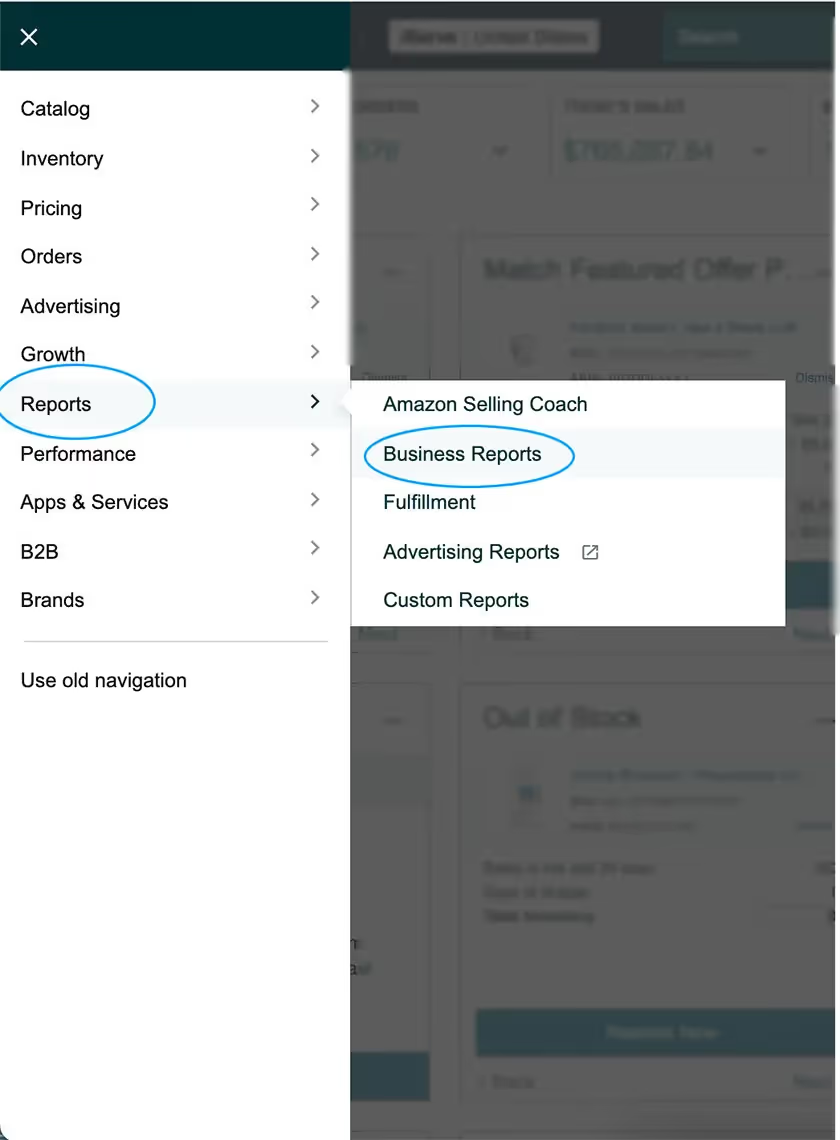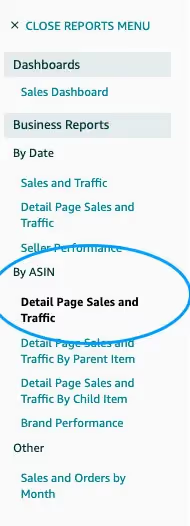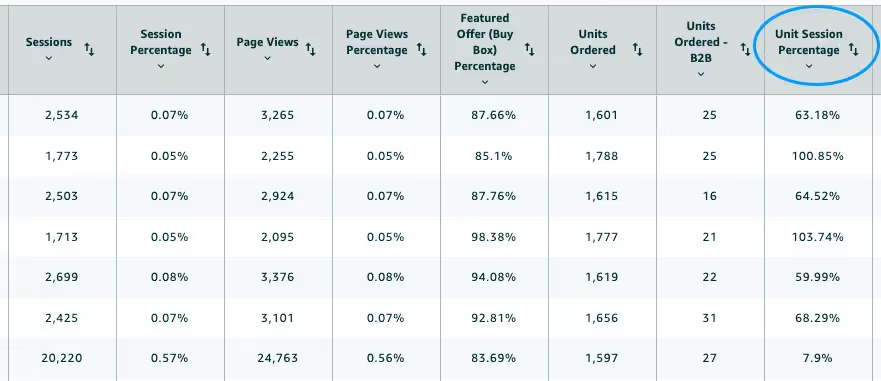Improve Your Amazon Conversion Rate
Your conversion rate is your ticket to growth on Amazon. Learn some of the best ways to improve it.
You’re selling an awesome product on Amazon, one that you’re really passionate about and that your customer base seems to love. Problem is you’re not exactly seeing the sales numbers you want to be seeing. You’re pouring funds into your ad spend to get your product in front of the right eyes, but it doesn't seem to be moving the needle. What gives?
The issue can be traced back to your Amazon conversion rate. A brand’s Amazon conversion rate is one of the most important metrics for its long term growth on the platform. When your conversion rate is low, it decreases the sales potential for your product, even if that product is the best on the market. A high conversion rate, on the other hand, gives your brand better organic rankings and a better ROI from your paid ads, meaning more sales and more money in your pockets. A closer look at your conversion rate holds the secret to moving that needle.
What is your Amazon conversion rate?
Your Amazon conversion rate is the percentage of clicks on your Amazon ad that convert into sales. Essentially, your conversion rate shows you how many people are actually making a purchase directly after viewing your product listing. Knowing that number can help you pinpoint potential issues that may be getting in the way of your sales.
How do you find your Amazon conversion rate?
Finding your Amazon conversion rate is simple mathematics. It can be calculated with the following equation: Conversion Rate = Orders ÷ Page Views (or Sessions) To learn the conversion rate for your product, click into your Seller Central Business Reports, find the “By ASIN” category, and click on “Detail Page Sales and Traffic by Parent Item.” This gives you access to sales and sessions information for your product.



From this page you can select the date range you are most interested in and scroll through the table until you see “Sessions,” “Units Ordered,” and “Unit Session Percent.”


Sessions are the number of visits to your pages by unique users. (If a user visits the same page multiple times within 24 hours, it will still be considered 1 session.) Units Ordered are the number of units sold, and the Unit Session Percentage is taking your Units Ordered and dividing it by the Sessions to give you the Unit Session Percentage, or conversion rate.
What is a good conversion rate on Amazon?
Now you know how to find your conversion rate, but how do you know if your conversion rate is good or bad? The best way is to stack it against Amazon’s numbers. Amazon has some of the best conversion rates across all ecommerce marketplaces—that’s why brands are so attracted to selling there. On average, a good Amazon conversion rate for a non-Prime shopper is between 10-15%. That number drops to 3.32% among Top 500 merchants due to the nature of how often they are viewed.
The conversion rate for Amazon Prime customers is even juicier, 74% in fact. It’s important to note here that a good conversion rate does vary per product per niche. Items that are more expensive ($100+) will usually have lower conversion rates, because customers are more likely to shop around and compare these products to similar products before making a final purchase on Amazon.
A good conversion rate is also dependent on sample size. You might have 10 conversions out of 20 page views, for example, but even though your conversion rate is at 50%, you’ve still only made 10 sales, which isn’t great for your revenue. Whereas you may have 100 views with 20 conversions, making your conversion rate seem worse at 20%, but in reality it’s double the sales from the previous example.
What causes a low conversion rate?
If your conversion rate falls below average, it’s highly likely your listing, your ad campaign, or both, need some work, and there are several contributing factors you can look at.
Listing optimization
A common reason why conversion rates suffer is because product listings are lackluster or unclear. Maybe your primary image is a bit blurry or your image stack only has one or two photos, so customers don’t feel confident that they know what your product is like. You might have a title that is unclear or not specific enough, or a product description that doesn’t provide enough information. A customer may hit your page and be unsure what they are getting from your product, and choose to buy elsewhere.
On the flipside, maybe your product description is lost in clunky paragraphs. If a listing isn’t easy to read and detailed enough to earn customers’ trust in the product, they likely won’t read through the information and thus won’t make a purchase. Optimizing your listing could be a game changer in your conversion rate.
Reviews
Another factor that causes low conversion rates is bad or scarce reviews. Customers will feel wary that they’re going to have a bad experience with your product if they look at a listing and only see three stars on a product or negative reviews that have gone unaddressed by a seller.
Price
You may consider pricing as well. If your product is priced too high—and even if it’s priced too low—you’re less likely to make a sale. Too high and buyers will look for cheaper options, too low and you may communicate lower quality. You need to stay competitive to convert.
Advertising
Listings are one area where your conversion could be suffering. Ad campaigns are another. You may be bidding on the wrong keywords, or keywords that are far too general. Maybe you’re selling a crossbody women’s purse, but instead of bidding on “crossbody women’s purse,” you’re bidding on “women’s purse.” Your listing is going to get lost in the sea of search results that come up when a customer searches for “women’s purse,” and because it isn’t specific enough for your product, your conversion rate won’t be too hot. You’ll also waste money on advertising that could be leveraged on more productive keywords.
How can you increase your Amazon conversion rate?
Improving your conversion rate helps every element of your business, both directly and indirectly. When you have a high conversion rate, not only does it mean you’re making sales, it’s also an indicator that your product is popular, and Amazon algorithms will reward your brand by putting your listing higher up in search rankings, leading to even more sales. To increase your conversion rate, you want to focus on making the shopping experience as clear and simple as possible for Amazon shoppers with high intent to purchase. The following are a few ways to do that.
Optimize your listings:
we mentioned this earlier, but how your listing looks is a critical element to how it converts. The first thing a customer looks at when scrolling through a list of products is the main image, title, and price, making these are crucial to get right. Beyond that, your image stacks are incredibly important, especially as more shoppers go mobile. On a mobile device the first thing a customer sees when clicking on the listing is your image stack, and if they scroll just slightly, they see the buybox–no listing description or A+ content in site.
And it’s not just a matter of having an image stack–Since this may be the first thing a customer sees, you’ll want to make sure you have a thoughtful image stack with high quality images and, in some cases, instructional images that can help a shopper learn how to use your product. The quicker a shopper knows exactly what they’re buying, the better it is for your conversion.
Your images need to sell the product, not just show it. Have your images call out desirable features, show your product in action, use positive customer feedback in your graphics, answer FAQs, etc. You want customers to understand the pain points your product can solve for them just by seeing an image of the product at work. But the image stacks showing first on mobile doesn’t mean you can ignore the description. Mobile customers will still scroll for more information, and desktop users will see the description right away.
You’ll want to make sure the information you provide in the description is easy to read (easy to skim is even better). We recommend bullet points that expound on the info found in the image stacks. Your copy should be tight, engaging, and informative, so shoppers can quickly get a sense of who you are as a brand and what your product can do for them.
Bid on specific keywords:
remember, you’re not trying to capture the attention of every single customer on Amazon. Not every customer on Amazon is looking for your product. You’re trying to capture the attention of customers who know exactly what they want and are intent on buying it. To that end, bidding on specific and unique keywords can help your product get to these customers quicker and use your ad dollars more efficiently.
Offer discounts:
shoppers are much more likely to purchase a product when they know they’re getting a good deal on it. Obviously, you won’t want to offer discounts all of the time, but a promotion here or there on a product can be a great way to give your conversion a boost. It helps you stay competitive and visible.
Leverage reviews (or “social proof”):
one of the reasons why a shopper doesn’t purchase a product when they visit a listing is because there isn’t enough social proof on that listing to persuade them that it would be a good idea. A way you can address that is to include standout buyer reviews in your copy, or be proactively addressing negative reviews. This will ease your potential buyer’s concerns and help them feel more confident that they’ll have a good experience. Another social proof can be the badges Amazon adds to products: Amazon’s Choice, Best Seller, Climate Pledge Friendly, etc. are just a few of the banners that can provide added trust in your offering.
Create an omni-channel sales funnel:
another way to increase your conversion rates is by funneling sales from other channels, like Facebook or Instagram, to a landing page that then redirects that traffic to your Amazon listing. This gives customers the chance to really get to know your product off-site before visiting your listing to make a purchase. If they like what they see on your landing page and proceed to your listing, it’s highly likely they’ll convert. It’s a little more work, but it is a way to net high-intent buyers.
Improve your customer experience:
brands that provide customers with memorable shopping experiences, whether that be through their shipping, packaging, email campaigns, or customer service, are more likely to have higher conversion rates. They establish trust and generate excitement for their brand in a way that builds loyalty, and a loyal consumer base is a consumer base that converts.
Increase your Amazon Conversion Rate with Pattern
Maintaining a strong conversion rate on Amazon and other marketplaces is key for maximizing your success. A poor conversion rate can mean wasted spend and lost sales. If you’re already getting the traffic to your listing, it’s worthwhile to take a few extra steps and help that traffic convert. At Pattern, we’ve got experts in design, advertising, and SEO all ready to help boost your listing’s conversion rate. Get in touch now to learn how.


.jpg)





.jpg)

